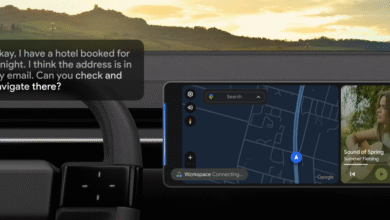Android Quick Share Now Works with iPhone AirDrop on Pixel 10

▼ Summary
– Google has updated Quick Share to work with Apple’s AirDrop, enabling file and photo transfers between Android and iPhone devices, starting with the Pixel 10 lineup.
– The feature requires iPhone users to set their AirDrop to “Everyone for 10 minutes” mode for discoverability, and Google aims to support “Contacts Only” mode in the future.
– Quick Share allows two-way communication, so iPhone users can also send files to Pixel devices, which must be set as discoverable to receive them.
– The connection is direct and peer-to-peer, ensuring data isn’t routed through servers or logged, with security safeguards tested by independent experts.
– Google plans to expand this functionality to more Android devices and improve cross-platform compatibility, following initiatives like RCS and unknown tracker alerts.
Google has introduced a significant update enabling its Quick Share feature to connect with Apple’s AirDrop system, marking a major step forward for cross-platform file sharing. This development allows Pixel 10 users to seamlessly send and receive photos, videos, and documents directly with iPhones, iPads, and Mac computers. The company intends to bring this functionality to more Android devices in the coming months.
For the feature to work, iPhone owners must adjust their AirDrop settings to the “Everyone for 10 minutes” mode, making their device visible to nearby users. Once this is done, Pixel users will see the iPhone listed as an available destination when they open the Quick Share menu. Google emphasized that this initial setup using the “Everyone for 10 minutes” option is just the beginning, expressing hope to collaborate with Apple in the future to enable the more secure “Contacts Only” mode. To ensure files go to the correct recipient, users should verify the device name shown on their screen before sending.
The sharing capability is fully bidirectional, meaning iPhone users can also initiate file transfers to Pixel phones. In such cases, the Pixel device must have its own visibility settings enabled to accept incoming shares. According to Google, the connection operates through a direct peer-to-peer link without routing data through any central servers. This approach means shared content is never stored or logged externally, enhancing privacy.
Google’s blog post highlighted that security was a foundational consideration during development, with independent experts evaluating the protective measures in place. This move aligns with Google’s broader strategy to improve interoperability between different operating systems, following previous initiatives like RCS messaging support and unknown tracker alerts. While the announcement did not specify any coordination with Apple, further details may emerge as the feature rolls out more widely.
(Source: TechCrunch)




